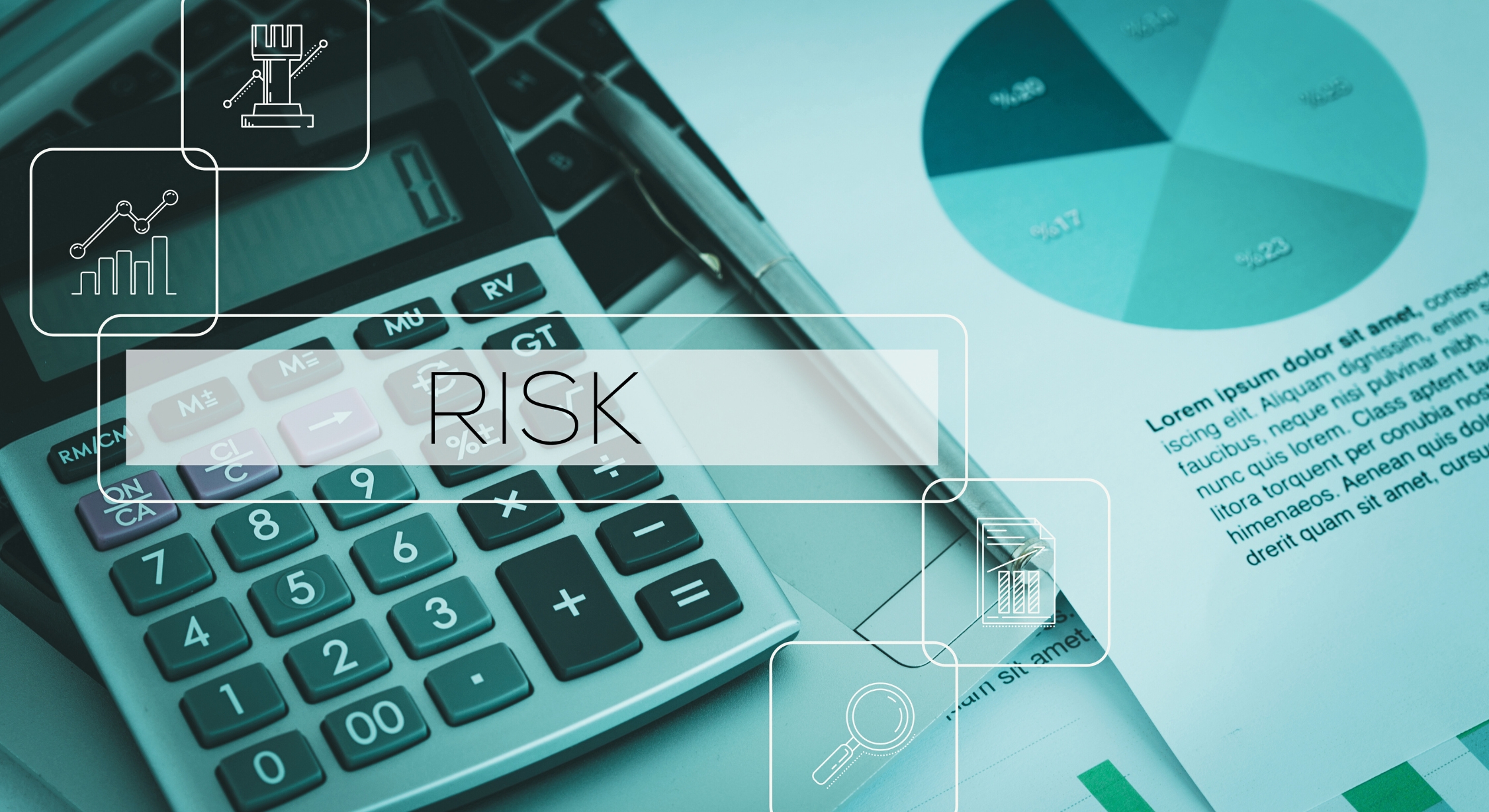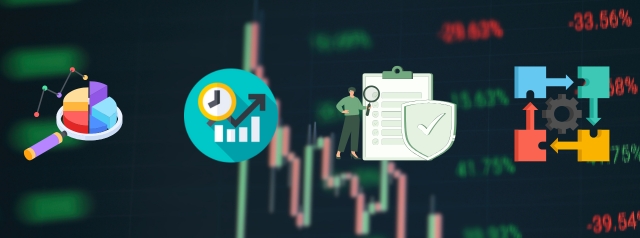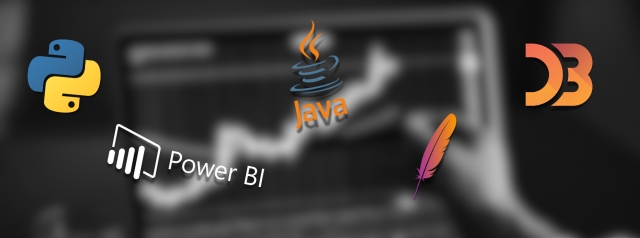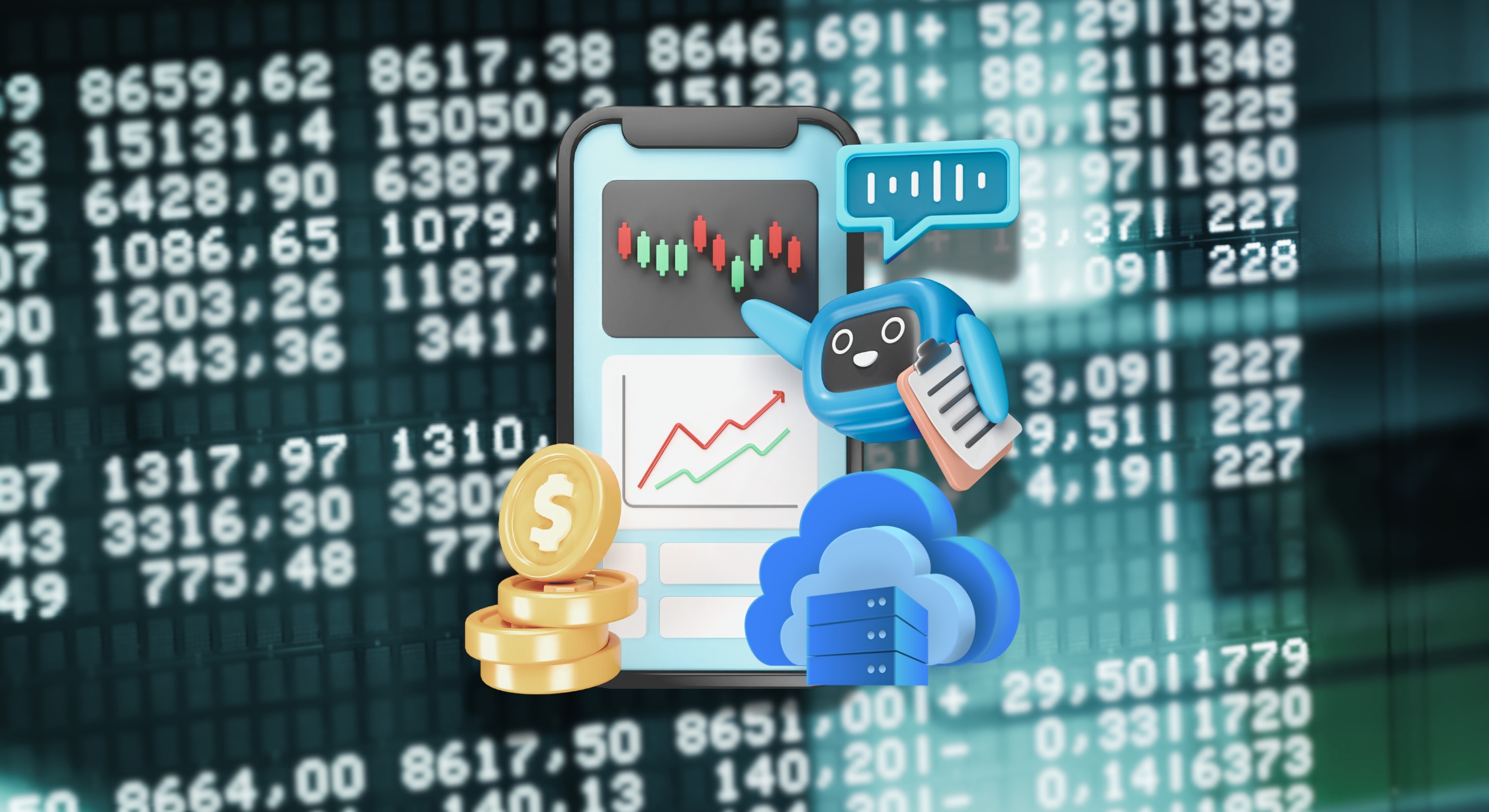At Experion, we understand that financial risk management is essential for businesses seeking to protect their assets, ensure stability, and maintain a competitive edge in today’s unpredictable markets. Managing risks proactively helps organizations avoid potential losses and navigate uncertain economic conditions. Financial risk management software is a powerful tool that enables companies to monitor, assess, and mitigate financial risks, providing a more secure and strategic approach to financial decision-making.
What is Financial Risk Management Software?

Financial risk management software is designed to identify, assess, and monitor financial risks that could impact a company’s operations or profitability. By integrating various tools and data analytics, this software allows risk managers and financial decision-makers to make informed decisions, helping them mitigate risks before they lead to losses. Risk management software supports organizations in achieving a proactive risk management strategy, enabling them to maintain financial health and compliance with regulatory requirements.
Through data analysis, real-time monitoring, and integration with other financial tools, custom financial risk management software provides tailored solutions for companies to address their unique risk challenges and adapt quickly to shifting market conditions.
Types of Financial Risks Addressed by Financial Risk Management Software
- Credit Risk
Credit risk is the risk of financial loss due to a client’s inability to meet their financial obligations. Delays in payment or outright defaults can disrupt cash flow and impact a company’s overall liquidity. Financial services risk management software helps organizations monitor credit exposure by analyzing client creditworthiness, tracking outstanding balances, and setting risk thresholds. With these tools, businesses can predict potential defaults, segment clients by risk levels, and implement proactive strategies to mitigate potential losses. This not only stabilizes cash flow but also builds resilience against client-related financial disruptions. - Market Risk
Market risk arises from changes in market conditions, including fluctuations in stock prices, interest rates, and foreign exchange rates. This risk can be especially volatile and challenging to manage, as it depends on external economic factors beyond a company’s direct control. Risk management software helps organizations track and analyze these market trends, enabling them to make informed adjustments to investment portfolios or business strategies. By monitoring market risks in real-time, companies can protect their financial assets, avoid excessive exposure to unstable markets, and better plan for economic shifts. - Liquidity Risk
Liquidity risk occurs when a company doesn’t have sufficient cash flow to meet short-term financial obligations. Insufficient liquidity can disrupt operations, delay growth opportunities, and in extreme cases, threaten a company’s solvency. Financial risk management software addresses this risk by providing tools to monitor liquidity levels and predict cash flow needs. Companies can use the software to forecast short-term and long-term liquidity requirements, ensuring they maintain adequate cash reserves. This visibility helps companies optimize capital allocation, improve cash flow stability, and mitigate the risk of sudden liquidity shortages. - Operational Risk
Operational risk involves potential losses resulting from internal failures, including process inefficiencies, system outages, human errors, and fraud. Operational risk, unlike other financial risks, is often more manageable because it primarily hinges on internal processes and policies. Financial risk management software helps organizations identify, assess, and manage these risks by tracking process performance, highlighting vulnerabilities, and establishing safeguards. For example, companies can implement controls that reduce fraud risks or use automated systems to streamline high-risk processes, enhancing both security and efficiency.
Key Features of Financial Risk Management Software

- Data Analysis and Modeling
Effective risk management relies on predictive analytics and simulation tools that provide organizations with insights into potential future risks. Financial risk management software includes advanced data analysis and modeling capabilities, enabling companies to perform “what-if” scenarios and simulate the impact of various risk factors. Through historical data, machine learning algorithms, and statistical modeling, this feature helps companies identify trends, quantify risks, and plan risk-mitigation strategies. For instance, in a scenario where market interest rates might change, the software can model potential outcomes on the organization’s financial position, allowing decision-makers to prepare for multiple contingencies. - Real-Time Risk Monitoring
One of the most powerful aspects of financial services risk management software is its ability to provide real-time risk monitoring. Continuous tracking and instant alerts allow organizations to detect emerging risks as they arise, giving them the ability to respond quickly and reduce negative impacts. Real-time monitoring is especially useful for dynamic risks, such as fluctuations in market conditions or changes in liquidity levels. The software alerts users when certain thresholds are breached, enabling swift action to adjust investments, secure additional liquidity, or mitigate exposure before a potential loss escalates. - Compliance Management
Adhering to industry regulations and standards is an ongoing challenge for many organizations, especially those in highly regulated sectors like finance, healthcare, and energy. Financial risk management software simplifies compliance by incorporating features that help track regulatory updates, monitor adherence to standards, and document compliance activities. This feature minimizes the administrative burden of compliance management, automates record-keeping, and reduces the risk of costly penalties from regulatory violations. By staying current with industry regulations, companies not only avoid fines but also enhance their reputation for reliability and accountability. - Reporting and Dashboards
Effective reporting and clear visualizations are essential for financial risk management, as they enable decision-makers to access key insights quickly and efficiently. Financial risk management software provides interactive dashboards and comprehensive reporting capabilities that allow executives to view real-time metrics, assess risk exposure, and evaluate risk trends at a glance. Customizable dashboards give risk managers flexibility in presenting data, while automated reporting allows them to generate detailed analyses that support strategic decision-making. These insights help executives make informed decisions based on a clear, accurate picture of the organization’s risk landscape. - Integration with Other Financial Tools
To create a holistic view of risk, financial services risk management software is designed to integrate seamlessly with existing financial systems, such as ERP (Enterprise Resource Planning), CRM (Customer Relationship Management), and analytics platforms. By consolidating data from multiple sources, the software enables better data accuracy and streamlines workflows, reducing the need for manual data transfers and the potential for errors. This integration also enhances the ability to identify cross-functional risks, as it brings together data from sales, operations, finance, and other departments. With all relevant data accessible in a single platform, risk managers can perform more comprehensive analyses and create more effective risk strategies.
Tools Used for Developing Financial Risk Management Software

Programming Languages
Programming languages such as Python, R, and Java are foundational for developing financial risk management software, thanks to their flexibility, efficiency, and extensive libraries tailored to data processing and analysis. Python is extensively used for data modeling and machine learning, thanks to libraries like Pandas, NumPy, and SciPy. R is popular for statistical analysis, providing precise control over data insights and predictive analytics. Java is known for its robustness and is often used in backend development, ensuring reliability and scalability in large, data-intensive environments.
Data Analytics and Visualization Tools
Data analytics and visualization tools like Tableau, Power BI, and D3.js help developers create interactive and visually accessible dashboards. These tools are essential for transforming complex risk data into easily interpretable visual insights, which are crucial for decision-making. Tableau and Power BI allow real-time data integration and support custom reporting, while D3.js provides a more customizable framework for creating interactive web-based visualizations. Together, these tools offer the visualization power needed to represent large volumes of risk data in actionable formats.
Big Data Processing Tools
Handling vast amounts of data is critical for effective financial risk management. Big data processing tools like Hadoop and Apache Spark enable the efficient storage, processing, and analysis of large datasets. Hadoop offers a reliable framework for distributed storage and processing, allowing data to be processed in parallel across multiple nodes, which is particularly useful in high-volume environments. Apache Spark enhances this capability by providing fast, in-memory data processing, enabling companies to analyze massive datasets quickly and perform complex risk assessments with high accuracy and speed.
Machine Learning Frameworks
Machine learning frameworks, such as TensorFlow, Scikit-Learn, and PyTorch, are instrumental in developing predictive models and advanced analytics for risk management. TensorFlow and PyTorch, known for their flexibility and support for neural networks, are used for building sophisticated predictive models that can identify and forecast potential risks. Scikit-Learn is widely used for simpler machine learning models and supports essential algorithms for classification, regression, and clustering, making it an ideal tool for general risk assessments. These frameworks allow organizations to leverage machine learning for real-time risk prediction, trend analysis, and automated decision-making.
Cloud Computing Platforms
Cloud platforms like AWS (Amazon Web Services), Azure, and Google Cloud are essential for managing the data storage and processing demands of financial risk management software. These platforms provide scalable resources, allowing companies to handle large datasets, manage real-time data streams, and access their systems from anywhere. With integrated tools for analytics, machine learning, and security, cloud platforms enable companies to maintain high availability, flexibility, and secure storage for sensitive financial data, all of which are vital for global, data-driven risk management solutions.
Blockchain for Security and Transparency
Blockchain technology, including tools like Ethereum and Hyperledger, adds a layer of transparency, security, and traceability to financial risk management systems. By using blockchain, financial institutions can store data in a decentralized manner, reducing the risk of fraud, tampering, and unauthorized access. Ethereum and Hyperledger allow for secure, distributed ledgers that track transactions, making it easier for organizations to maintain transparent records and demonstrate compliance. This is particularly valuable for companies needing enhanced data security, such as those dealing with sensitive financial or regulatory information.
APIs for Integration
APIs (Application Programming Interfaces) are essential for seamless data exchange between financial risk management software and other enterprise systems, including ERP, CRM, and analytics platforms. RESTful and GraphQL APIs are commonly used to enable efficient, flexible integration. RESTful APIs support data sharing across applications with standardized protocols, while GraphQL offers a more customizable data query structure, allowing for optimized data retrieval. APIs ensure that risk management software can communicate smoothly with other financial tools, facilitating automated workflows, enhanced data accuracy, and a cohesive ecosystem for financial data management.
At Experion, we leverage these cutting-edge tools and technologies to develop custom financial risk management software that meets the unique needs of your business, ensuring robust functionality, security, and seamless integration across your financial ecosystem.
Strategies for Effective Financial Risk Management
- Regular Risk Assessments
Regularly assessing financial risks is fundamental for maintaining alignment with the evolving market landscape. This process involves systematically evaluating a company’s risk profile, from credit and market risks to operational vulnerabilities, and identifying areas that may be susceptible to emerging threats. By continuously updating these assessments, organizations can adapt quickly to new risks, ensuring proactive responses and safeguarding financial stability. Regular risk assessments help to prioritize risk management efforts, enabling companies to allocate resources effectively to the most pressing threats. - Data-Driven Decision Making
In today’s fast-paced financial environment, leveraging real-time data and analytics is crucial for making timely, informed decisions. By incorporating live data streams, financial risk management software empowers decision-makers to respond strategically to changes in market conditions, customer behavior, or regulatory requirements. Data-driven insights support precise risk evaluations and proactive decisions, providing an essential edge for organizations to address emerging risks with agility and confidence. Companies can track key metrics and performance indicators, optimizing responses based on current, accurate data. - Automation of Routine Processes
Routine processes, such as compliance reporting and monitoring, can consume significant time and resources if performed manually. Automating these tasks improves efficiency, enhances accuracy, and reduces the likelihood of human error. Financial risk management software can automate tasks like regulatory reporting, data aggregation, and trend analysis, allowing risk management teams to focus on more strategic responsibilities. This not only ensures compliance with minimal effort but also improves the consistency and reliability of routine processes. - Stress Testing and Scenario Analysis
Running stress tests and scenario analyses allows companies to evaluate their financial resilience under adverse conditions. These simulations model the impact of various hypothetical scenarios, such as economic downturns, market crashes, or sudden shifts in interest rates, providing insights into potential vulnerabilities and the strength of existing risk management strategies. By identifying weak points in advance, companies can make adjustments to their risk frameworks, optimize capital reserves, and improve overall preparedness for future challenges. - Regulatory Compliance Management
Keeping up with changing regulations is essential for avoiding legal issues and maintaining stakeholder trust. Financial risk management software often includes compliance tracking features, ensuring that companies stay current with relevant laws, industry standards, and best practices. These tools streamline the process of tracking regulatory updates, managing documentation, and enforcing compliance protocols, reducing the risk of non-compliance penalties. By simplifying compliance management, organizations can foster transparency and build confidence among investors, partners, and clients. - Cybersecurity Measures
As financial data becomes increasingly digital and accessible, robust cybersecurity is crucial for protecting sensitive information from cyber threats. Financial risk management software incorporates advanced security measures, including encryption, multi-factor authentication, and routine security audits. These protocols help prevent unauthorized access and safeguard data integrity, ensuring that risk management processes are conducted securely. Regular security assessments and continuous monitoring further strengthen data protection, enabling organizations to stay ahead of evolving cyber risks. - Effective Communication and Collaboration
Successful financial risk management relies on coordinated efforts across departments, including finance, IT, and risk management teams. Encouraging open communication and collaboration fosters an integrated approach to risk management, ensuring that teams are aligned on strategies and goals. Collaborative tools within financial risk management software facilitate seamless information sharing, streamline workflows, and support faster responses to complex financial risks, helping the organization to act cohesively and make well-informed decisions.
Benefits of Using Financial Risk Management Software
- Enhanced Accuracy in Risk Assessment
Financial risk management software leverages data-driven insights, reducing the likelihood of human error and enhancing the precision of risk assessments. By analyzing real-time data and historical trends, the software provides a comprehensive view of an organization’s risk profile, allowing for more accurate assessments. This precision in risk analysis enables companies to better allocate resources, implement targeted mitigation strategies, and improve financial planning for both short- and long-term objectives. - Informed Decision-Making
Real-time insights offered by financial risk management software empower executives and risk managers to make proactive, data-informed decisions. By tracking market conditions, credit exposures, and operational risks in real time, the software enables companies to respond swiftly to financial risks. This responsiveness positions the organization to adjust strategies quickly, reduce exposure to adverse events, and capitalize on emerging opportunities, ultimately strengthening its competitive edge and financial resilience. - Improved Efficiency
By automating manual and repetitive tasks, financial risk management software significantly reduces the workload on risk management teams. The automation of processes such as data collection, regulatory reporting, and routine monitoring frees up valuable time and resources, allowing teams to focus on high-priority and strategic tasks. This increase in efficiency translates to faster, more effective risk management operations, ensuring the organization’s risk framework remains agile and capable of adapting to evolving risks. - Regulatory Compliance
Financial risk management software simplifies compliance by providing dedicated tools to track regulatory changes, manage compliance documentation, and monitor adherence to industry standards. With built-in alerts and automated reporting, the software helps companies stay compliant with minimal manual intervention. By streamlining compliance efforts, organizations can reduce the risk of regulatory penalties, maintain their reputation for reliability, and demonstrate a commitment to transparency, ultimately enhancing trust with stakeholders. - Cost Savings
Identifying and addressing risks early is key to minimizing potential losses. Financial risk management software helps companies detect risks sooner, allowing them to implement preventative measures before they escalate into costly problems. By reducing the impact of financial losses and avoiding fines from regulatory non-compliance, organizations achieve substantial cost savings. Additionally, the software’s efficiency gains lower operational costs over time, contributing to a more cost-effective risk management strategy.
Future Trends in Financial Risk Management Software

- AI and Machine Learning for Risk Prediction: Advanced algorithms will enhance risk forecasting, allowing organizations to anticipate potential risks with greater accuracy.
- Cloud-Based Solutions for Accessibility and Security: Cloud computing will enable more secure, accessible risk management solutions, especially for organizations with distributed teams.
- Increased Focus on Cybersecurity Risks: With the rise in cyber threats, future software will likely incorporate more sophisticated security measures to protect against data breaches and fraud.
- Emphasis on Sustainability-Related Financial Risks: As sustainability becomes a priority, risk management software will integrate tools to monitor and address environmental and social risks.
How Experion Can Help You With Financial Risk Management Software

Experion offers custom financial risk management software solutions designed to meet the unique needs of your organization. Our team of experts combines advanced analytics, data security measures, and seamless integration capabilities to build robust software that aligns with your goals and regulatory requirements. We leverage industry-leading tools and frameworks to create solutions that not only mitigate risk but also empower your business with insights for growth.
Our Approach:
- Strategic Planning and Design: We work closely with stakeholders to develop a customized risk management solution that aligns with your objectives and mitigates key financial risks.
- Enhanced Security: From data encryption to multi-factor authentication, our solutions integrate advanced security features to safeguard your financial data.
- Seamless Integration: Our software is designed to work seamlessly with your ERP, CRM, and other systems, ensuring smooth data exchange and process efficiency.
- Ongoing Support and Maintenance: We offer continuous support to keep your software secure, up-to-date, and fully aligned with evolving regulations and business needs.
Conclusion
Financial risk management software is essential for businesses seeking to safeguard their financial health and ensure resilience against various financial risks. This software empowers organizations with tools for accurate risk assessment, proactive decision-making, and regulatory compliance, making it a strategic asset in an increasingly volatile market.
With the right software, businesses can not only protect against financial losses but also gain a competitive edge by acting on real-time insights and maintaining regulatory compliance. Exploring solutions tailored to your organization’s specific risk management needs will help you build a stronger, more resilient financial foundation.
Key Takeaways
- Proactive Risk Management: Financial risk management software helps organizations stay ahead of potential risks with real-time data and predictive analytics.
- Enhanced Compliance: Built-in compliance management ensures businesses remain in alignment with industry regulations, reducing legal and financial exposure.
- Data-Driven Decisions: Real-time monitoring and analytics enable informed, strategic decisions that improve financial resilience.
- Operational Efficiency: Automated processes and integration with other financial tools streamline operations and free up valuable time for high-priority tasks.
- Security and Transparency: Strong cybersecurity measures and blockchain capabilities ensure safe and transparent data handling.
- Scalable Solutions: Cloud and big data tools ensure that risk management software can grow alongside your business needs.
- Future-Ready: Trends in AI, machine learning, and sustainability risk tracking make financial risk management software a critical investment for forward-looking businesses.
At Experion, we specialize in creating custom financial services risk management software that empowers businesses to thrive. Our solutions are designed with a focus on security, scalability, and integration, helping you navigate risks effectively while positioning your organization for sustained success.

